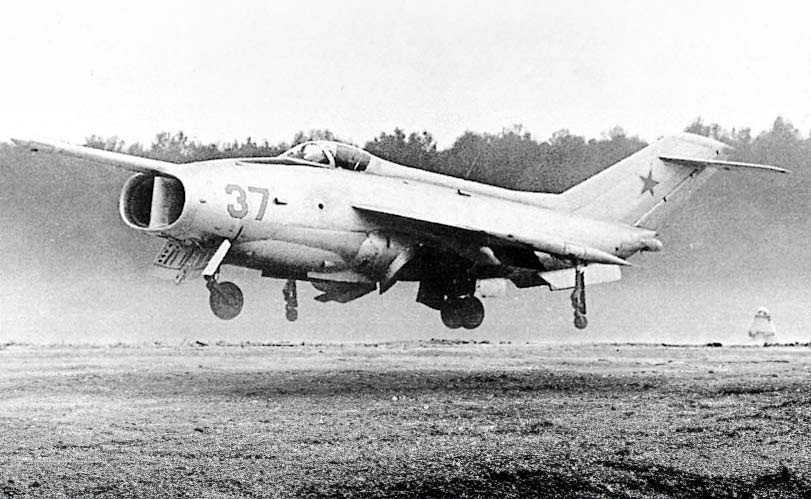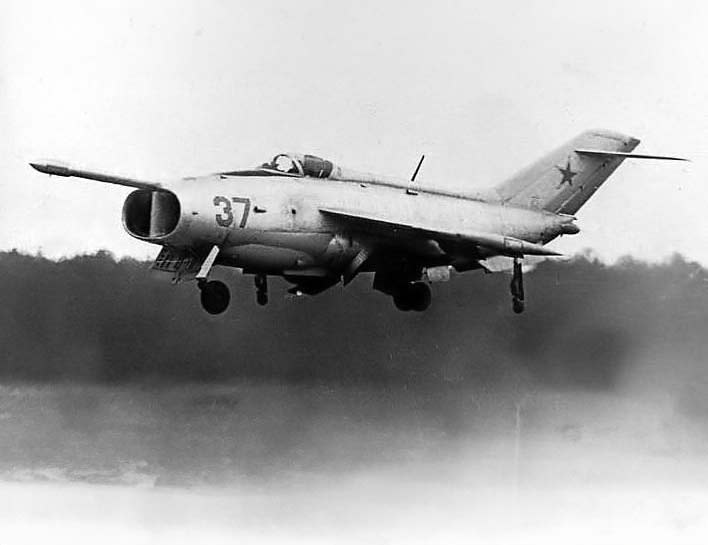The Yakovlev Yak-36, NATO code “Freehand,” was the Soviet Union’s first VTOL (Vertical Take-Off and Landing) experimental aircraft, a precursor to advanced VTOL designs.
In Brief
The Yakovlev Yak-36, known in NATO circles as “Freehand,” was an experimental VTOL aircraft developed by the Soviet Union in the 1960s. It featured two vectored thrust turbojet engines and was designed to explore the capabilities and limitations of VTOL technology. The Yak-36 was a testbed for developing operational VTOL combat aircraft, leading to the development of the Yak-38. Although it never entered operational service, the Yak-36 was crucial in advancing Soviet VTOL aircraft technology, providing valuable data that influenced future designs and concepts in vertical takeoff and landing capabilities.

History of the Development of the Yakovlev Yak-36 (Freehand)
In the context of the Cold War, the Soviet Union sought to match or surpass Western technological advancements in military aviation. The development of a VTOL aircraft became imperative as the West, particularly the UK and the US, made significant strides in this domain. The Yakovlev design bureau initiated the Yak-36 project in the early 1960s, aiming to explore the practicality and tactical utility of VTOL aircraft within the Soviet aerospace defense framework.
The program was launched to develop an aircraft that could operate from unprepared positions, negating the need for traditional runways which could be vulnerable in the event of conflict. This requirement was partly in response to the perceived threat of Western VTOL developments and the strategic need for versatile combat aircraft. The Yak-36 made its first untethered flight in 1963, demonstrating significant potential in VTOL operations.
Design of the Yakovlev Yak-36 (Freehand)
The Yak-36 was designed with a high-wing configuration, incorporating two Rybinsk RD-36-35FV turbojet engines mounted in the fuselage with vectorable nozzles for vertical thrust. The aircraft’s design focused on simplicity and functionality, with the engines being pivotal to its VTOL capabilities. For horizontal flight, the engine nozzles would swivel to provide rearward thrust, while for vertical takeoff, landing, or hover, the nozzles would point downward.
The Yak-36 was equipped with an ejection seat, a necessary safety feature given the experimental nature of its flights and the inherent risks of VTOL operations. The landing gear was a tricycle type, retractable to reduce drag during flight. Despite its innovative design, the Yak-36 faced challenges, including engine reliability, limited payload capacity, and the complexity of transitioning between vertical and horizontal flight.
Performance of the Yakovlev Yak-36 (Freehand)
The Yak-36’s performance was characterized by its pioneering VTOL capabilities, allowing it to take off and land vertically and hover in mid-air. The aircraft demonstrated a maximum speed of around 1,000 km/h (620 mph) and a range limited by its fuel capacity and the inefficiency of VTOL flight modes. Its service ceiling and operational range were modest compared to conventional aircraft, constrained by the high fuel consumption of its engines in VTOL mode.
While it did not match the speed or range of contemporary fixed-wing fighters, the Yak-36 was not designed to compete directly with them. Instead, its value lay in its ability to operate from confined spaces, showcasing a new realm of tactical flexibility. The insights gained from its test flights were invaluable for subsequent Soviet VTOL aircraft developments.
Variants of the Yakovlev Yak-36 (Freehand)
The Yak-36 program primarily produced the initial prototype units used for testing and evaluation. While there were no direct variants of the Yak-36, its design and operational data directly influenced the development of the Yak-38, the Soviet Union’s first operational VTOL combat aircraft. The Yak-36 served as a foundational technology demonstrator, informing the engineering and operational tactics of future VTOL platforms.

Military Use and Combat of the Yakovlev Yak-36 (Freehand)
The Yak-36 “Freehand” was never deployed in combat or operational military service, as it was an experimental aircraft designed to gather data on VTOL flight characteristics and potential military utility. Its primary role was as a technology demonstrator, paving the way for the development of the Yak-38 “Forger,” which would become the Soviet Navy’s first operational VTOL fighter. The Yak-36’s contribution was thus more to research and development than to active military engagements.
The Yakovlev Yak-36 “Freehand” played a pivotal role in the evolution of Soviet VTOL aircraft technology. As an experimental platform, it provided essential insights into the capabilities, limitations, and potential of VTOL flight, influencing subsequent designs and operational concepts. While the Yak-36 itself did not advance beyond the experimental stage, its legacy is cemented in the foundation it laid for future advancements in VTOL aviation, marking a significant step forward in aerospace engineering and military aviation strategy.
Back to the experimental aircraft section.